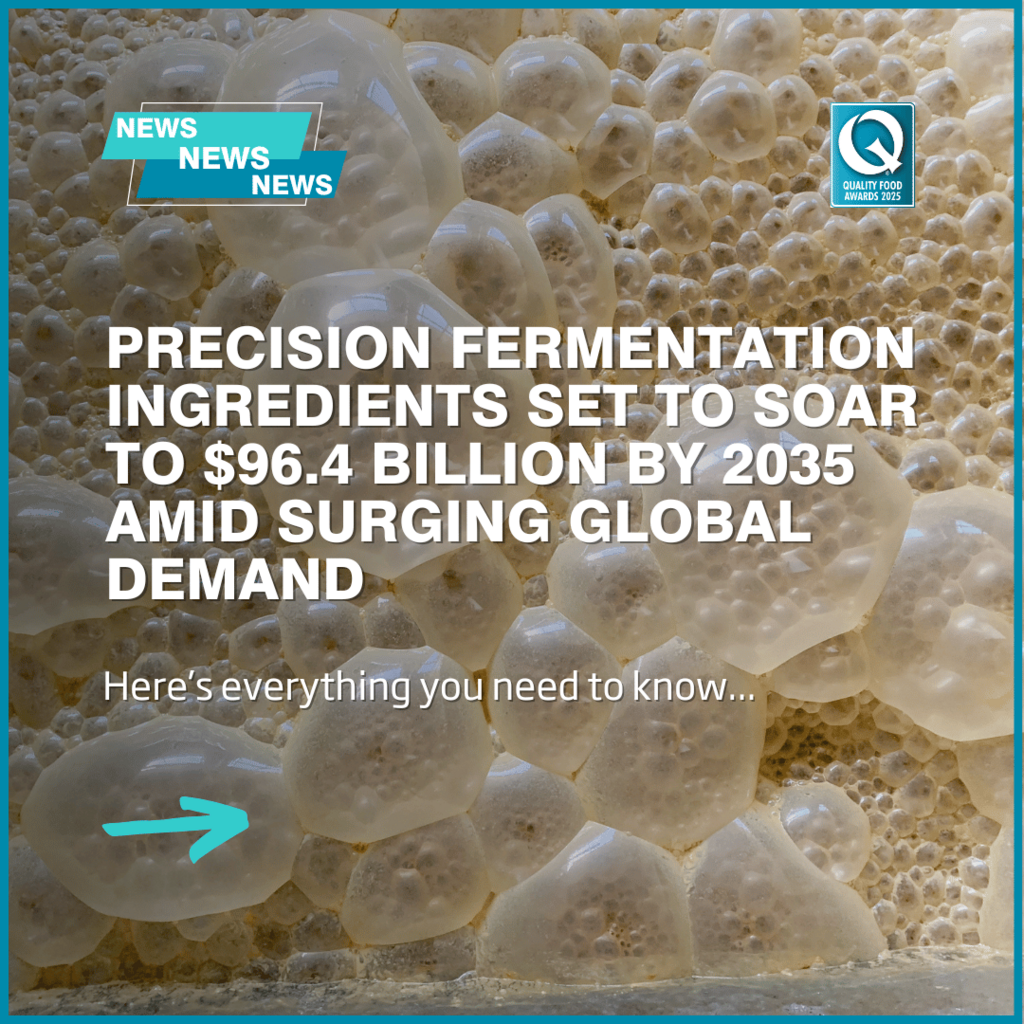
Precision fermentation ingredients set to soar to $96.4 billion by 2035 amid surging global demand
The precision fermentation ingredients market is predicted to explode from USD 3.4 billion in 2025 to USD 96.4 billion by 2035, driven by technological advances, shifting consumer preferences, and expanding applications across food, pharmaceuticals, and cosmetics industries.
The precision fermentation ingredients market is poised for extraordinary growth, with current forecasts projecting a surge from an estimated USD 3.4 billion in 2025 to an impressive USD 96.4 billion by 2035, reflecting a compound annual growth rate (CAGR) of nearly 40%. This exponential expansion underlines how precision fermentation is set to become one of the most transformative forces in the global ingredient ecosystem over the next decade. The substantial market growth is driven by increasing demand across a variety of sectors—including food, pharmaceuticals, specialty ingredients, cosmetics, and industrial applications—which are all leveraging fermentation-based biotechnologies to innovate sustainably and efficiently.
Proteins are anticipated to lead the product type segment, commanding over 36% of the market share in 2025. This dominance stems from a global shift towards sustainable, nutritionally rich, and ethically produced protein alternatives. Precision fermentation excels in producing proteins of high bioavailability, consistent quality, and functional versatility, which can mimic the texture and flavour of animal-derived proteins, fueling rapid adoption in meat and dairy substitutes, sports nutrition, and other health-oriented food products. The microbial-based ingredient source segment captures the largest share at 51.8%, driven by the scalability, cost-effectiveness, and precision microbial systems like yeast, fungi, and bacteria provide. Advances in synthetic biology and metabolic engineering are continuously enhancing microbial strain yields and segment functionality, enabling commercial-scale production to meet soaring demand.
Geographically, North America, Europe, and Asia-Pacific stand out as key growth regions. North America and Europe benefit from robust regulatory frameworks and strong investment ecosystems supporting food-tech innovation. In contrast, the Asia-Pacific region is the fastest-growing market, buoyed by rising consumer interest in alternative proteins and plant-based foods, alongside significant governmental support and expanding production infrastructure. China exemplifies this trend, projecting the highest regional CAGR at 53.9%, catalysed by rising health awareness, strong government initiatives, and focus on cost-effective production methods. India is also prominent, with a CAGR nearing 50%, driven by growth in functional foods, clean-label nutrition awareness, and expanding food processing sectors. Western European markets like Germany and the United Kingdom show strong growth supported by regulatory rigor and food innovation, while the United States continues to lead in scaling production and driving consumer acceptance backed by regulatory oversight.
The market's growth correlates with evolving consumer preferences towards sustainable, clean-label, and animal-free products. This trend is fortified by technological breakthroughs in microbial engineering and fermentation processes, which have unlocked unprecedented potential for producing proteins, enzymes, and other bioactive compounds with high purity and consistent functionality. Regulatory bodies in multiple regions have begun approving precision fermentation-derived ingredients, enhancing market accessibility and consumer trust. However, the pace of regulatory approval and consumer acceptance varies by geography, influencing local adoption rates and competitive dynamics.
Cost and scalability of production remain critical factors shaping market development. North American and European producers typically lead with advanced fermentation infrastructure that lowers production costs per unit, while Asia-Pacific regions emphasize growth through cost-efficient mid-scale facilities and modular systems to achieve broader accessibility. The ongoing challenge is balancing technological sophistication with economic viability to achieve price parity with conventional animal-derived ingredients.
In addition to food and beverage applications, precision fermentation ingredients are increasingly utilised in pharmaceuticals, cosmetics, specialty chemicals, and sustainable materials. For instance, pharmaceutical-grade proteins, specialty enzymes, and bio-based cosmetic actives are emerging markets that highlight the technology’s versatility. This broadening application spectrum strengthens the market’s resilience and opens multiple avenues for innovation and commercialisation.
As for key players, the market is highly competitive and innovation-driven. Industry frontrunners like Amyris, Ginkgo Bioworks, Perfect Day, and Impossible Foods, among others, are pioneering scalable fermentation platforms and proprietary strains that improve yield and cost-efficiency. These companies supply a diverse portfolio of alternative proteins, enzymes, and bioactive compounds that cater to diverse industry needs, from food manufacturers to pharmaceutical and personal care producers. Collaboration and partnerships are frequent, aiming to accelerate product development and market penetration.
Overall, the precision fermentation ingredients market encapsulates a high-value, rapidly evolving segment of the biotechnology and food innovation landscape. With exponential market growth anticipated, driven by technological advances, shifting consumer demands, and expanding regulatory acceptance, precision fermentation is set to redefine how critical ingredients are produced and incorporated across multiple industries globally.
